On April. 3rd, 2018, the Centre organized a technical
visit to National
Space Science Center (NSSC) of Chinese Academy of Sciences (CAS). Participants from
2017 MASTA & DOCSTA Program attended this technical visit, and wrote
about their experience and thoughts. Here are some excellent journal article
and excerpts from the participants.
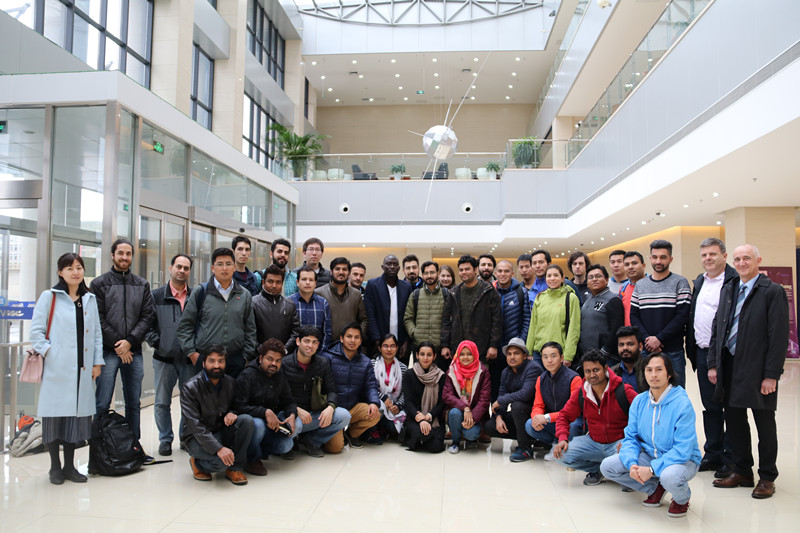
Journal Article from
FARAH UZMA, one Pakistani participant in the field of GNSS:
On April 3rd, 2018, we went to National
Space Science Center (NSSC) of Chinese Academy of Sciences (CAS), Huairou
Campus for technical visit, in which more than forty international students
were participated from different countries. The Agenda of this visit given in
advance raised our awareness of NSSC projects and its future program.
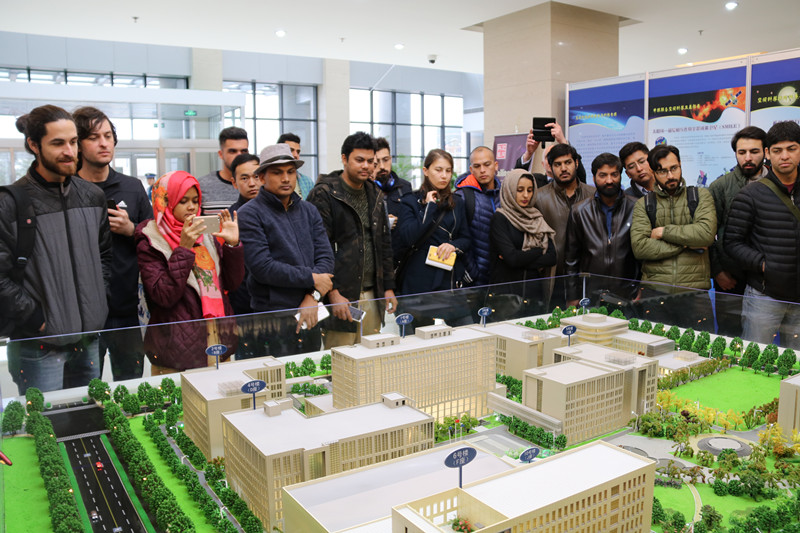
On the behalf of NSSC, International
Cooperation Officer, Mr. Xu Yongjian, extended warm welcome on the arrival of us.
During his welcome speech, he mentioned that NSSC is the China’s gateway to
space science and the institute which is responsible for planning, developing,
launching and operating China’s space science satellite missions. It
established in 1958 by CAS, and dedicated itself to developing China’s first
artificial satellite, known as Dongfanghong-1(DFH-1). From 1958 to 1968, NSSC
designed, developed and tested DFH-1,and built an engineering model before it
was handed to industry, paving the way for its successful launch on April 24,
1970.It also spearheads space science research in the fields of space physics,
space environment, microwave remote sensing, space engineering technology, etc.
After that, Dr. Gao Chen presented
Concurrent Designs Facility (CDF) procedure of NSSC. During his presentation,
he talked about multiple topics such as objective of CDF, hardware
architecture, software modeling, space craft structure and mechanism, payload
design and analysis, its communication analysis.
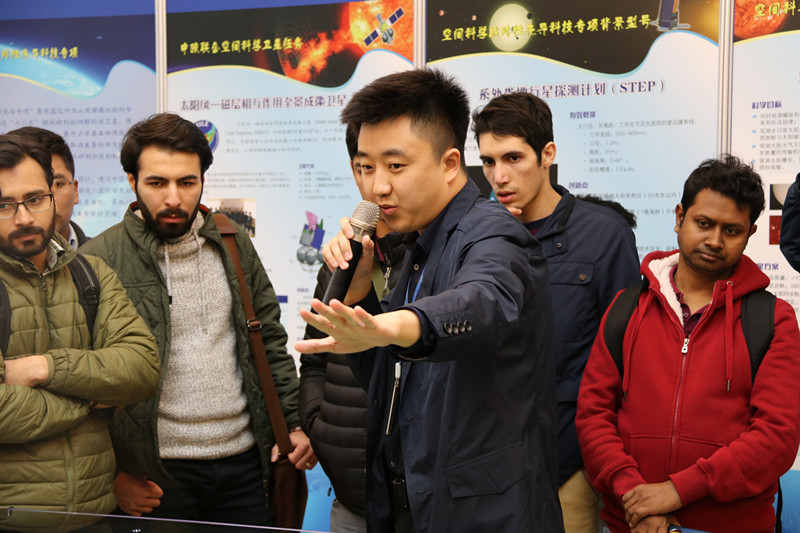
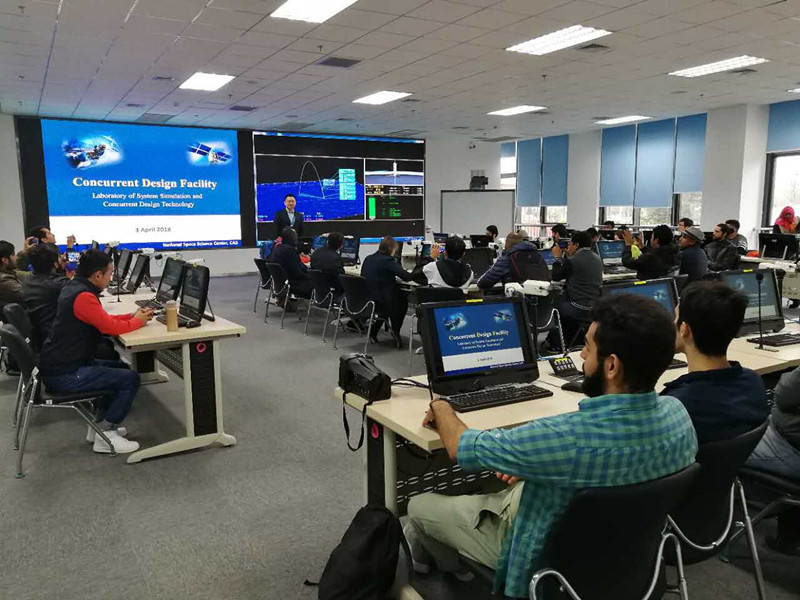
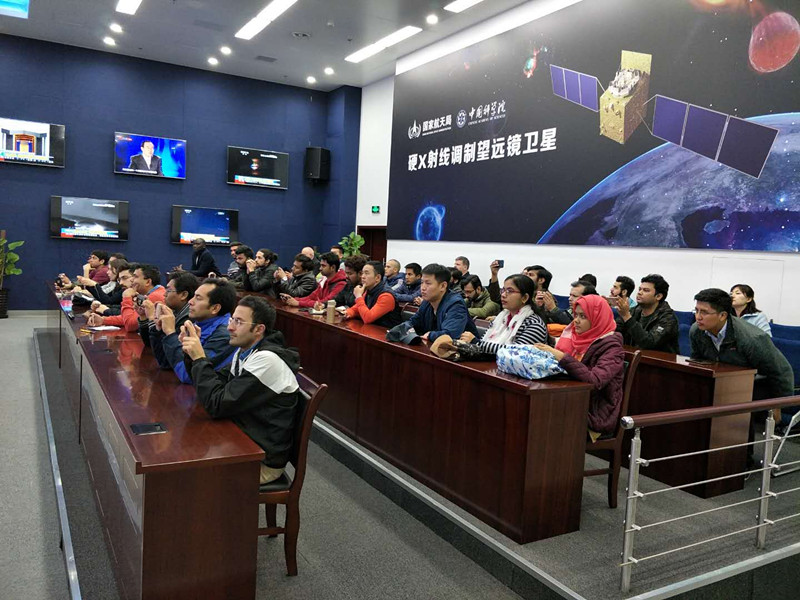
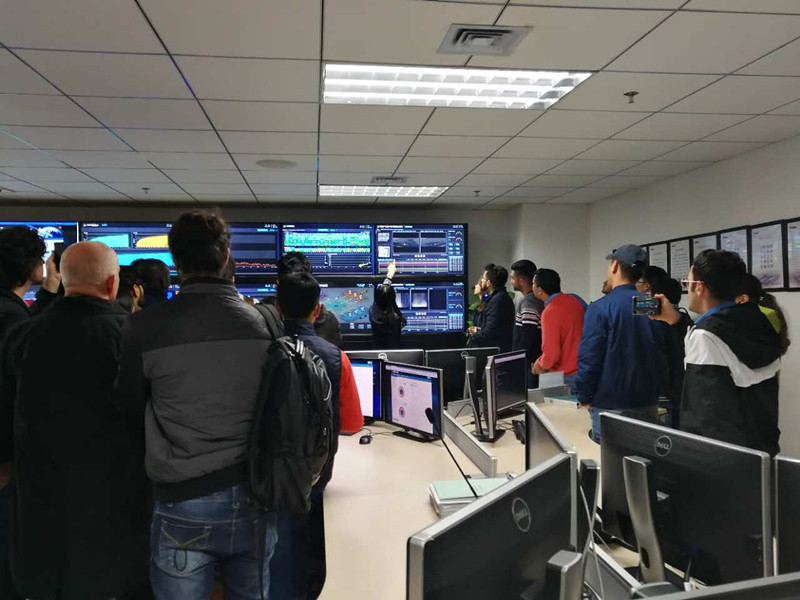
Afterwards, the participants visited the
Space Science Mission Operation Center (SMOC). SMOC is the ground support
center in NSSC that performs the operation management of satellite. It is
mainly responsible for mission planning and scheduling, payload correction,
data receiving and production, archiving of all data and long term data service
to science data user community.
Subsequently, On behalf of NSSC, Prof.
DONG Xiaolong made a brief introduction of NSSC and its space science
activities. He touched upon many scientific and technological achievements made
by NSSC, including "WuKong" dark matter detection satellite (DAMPE)
ande "Mozi" quantum satellite (QUESS). He mentioned that all those
efforts make them feel a sense of achievement, which is a manifesto of the care
from the state leaders in the development of space science in China, and also
reflects the importance of space science in building a world power of science
and technology. In addition, he talked about future strategic priority program
on Space Science for 2017 - 2022 years such as Solar wind Magnetosphere
Ionosphere Link Explorer (SMILE), Advanced Space-borne Solar Observatory
(ASO-S), Water Cycle Observation Mission (WCOM),
Magnetosphere-Ionosphere-Thermosphere Coupling Exploration (MIT).He highlighted
the following more future priority topics of NSSC:
Searching
and discovering life in the solar system
Dark
matter/ Dark energy
Solar
system exploration, including comets and asteroids sample return
Solar
influence on the Earth system
Earth
system science: climate change and global warming
Enabling
technologies to cross the above frontiers

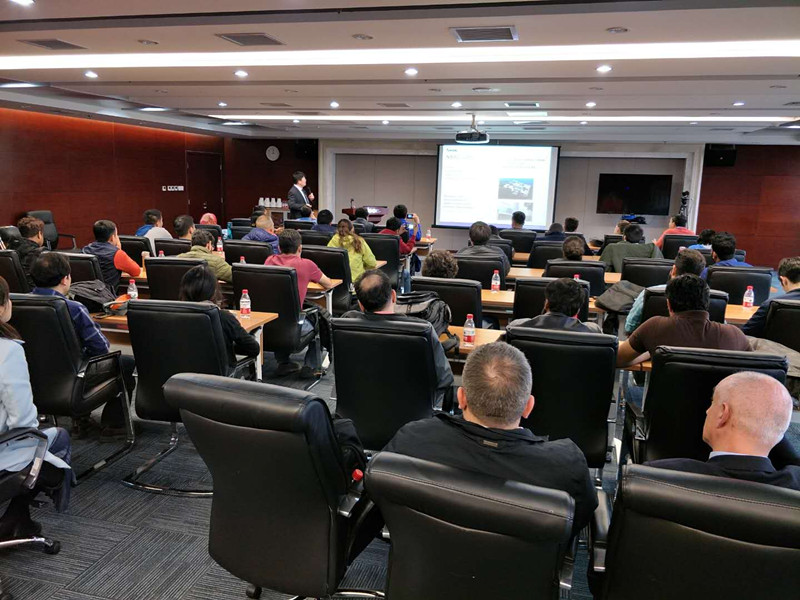
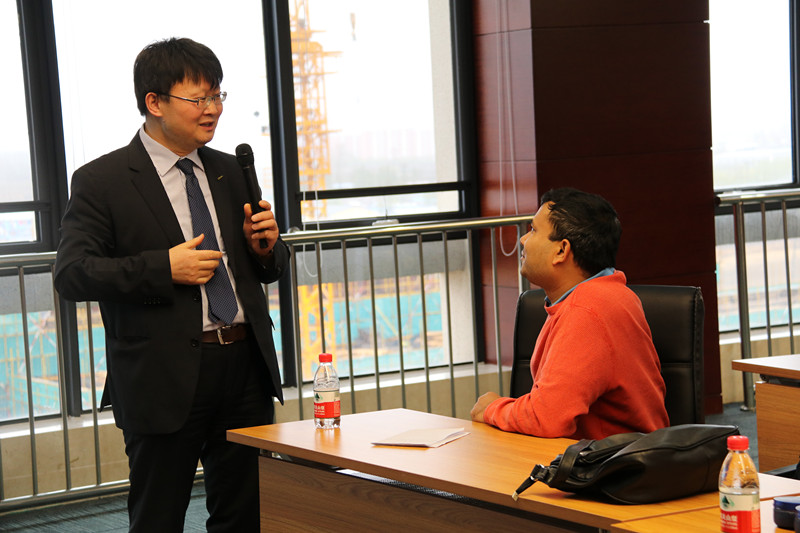
In addition, he mentioned that NSSC also
offers Ph.D. and master’s programs in the fields of space physics, computer
application technology, geo-space exploration technology and electromagnetic
theory and microwave technology. After his presentation, participants took the
initiative to consult with him, and he answered the questions with patience. Thanks
to this visit, everyone got to know the history of space mission in China conducted
by NSSC.
As an extension of traditional classroom
teaching, this type of technical visit enables students to understand China’s
achievements in space mission, to perceive the profound heritage of China’s
space structure, to increase its understanding of Chinese technology, China’s
vision, China’s approach and Chinese style, and to strengthen international
exchange and cooperation in the space industry and promote China's space to the
world.
Experts from
participants:
RENE ROMAN CEREZO PAREDES from Bolivian wrote: “The visit to the NSSC
allowed me to know the history and current state of China's space sciences. The
structure of work, the challenges they faced with as the leading organization
in space science in China have been clearly described. Therefore, learning
about the work of the NSSC is very important for states or organizations involved
in space activities, because the work of the NSSC can be taken as a reference.
On the other hand students can identify solutionsmade by the NSSC that could
help their states or organizations in spatial issues. This also allows people to
generate demand for joint work among space organizations both in China and other
countries. Currently the NSSC has already started joint work with some
countries, and I believe that there are more countries interested in working
together.”
GOKMEN GAMZE, a Turkish participant in
the field of Micro-satellite, said: “From the visit to the NSSC, CAS, we get to
know the NSSC facilities, studies accomplishments, and also their program on
space science from 2011 to 2016 and beyond 2017. China’s visions, purposes and
development principles have helped all of these studies become accomplishable.
NSSC is a center where a lot of important studies are being conducted
successfully. Seeing these successes
with my own eyes gave me an understanding on how much China puts importance on
space sciences which I find very helpful to the future. This trip broadened my
vision on the importance of these studies as well. ”
MUHAMMAD SHAHID from Pakistan, majoring
in Micro-satellite, mentioned in his article that: “ From launching phase to
‘End of Life’ phase, a spacecraft requires constant monitoring and controlling.
The spacecraft should remain in particular orbit at particular orientation in
order to achieve the specific objectives. For example, solar arrays should
always face the sun so that spacecraft could get enough solar energy. Camera should
be pointing towards the earth in case of earth monitoring satellites as well.
So control of spacecraft in orbit is necessary.
The visit of the NSSC provides the
visual and practical illustration of this phenomenon which not only enlightened
the students about practical way of launching, controlling and monitoring of
spacecraft but also provided a platform to visualize the applications of space
technology by giving better understanding of the theoretical knowledge we have gained
during our studies in field of Micro-Satellite Technology in subjects like
space environment, orbital mechanics etc.”

